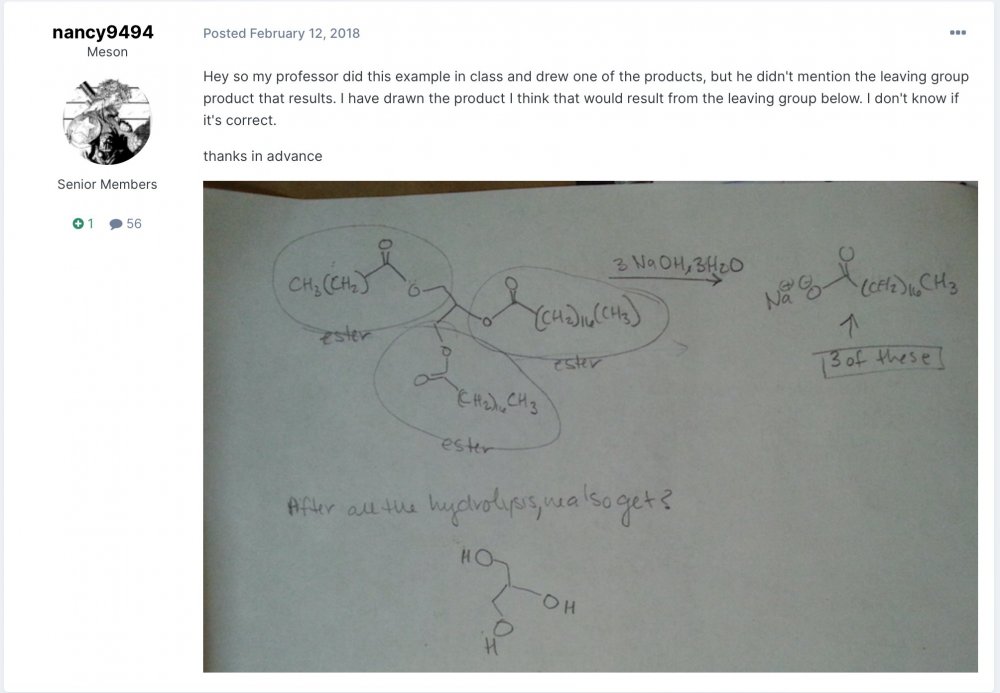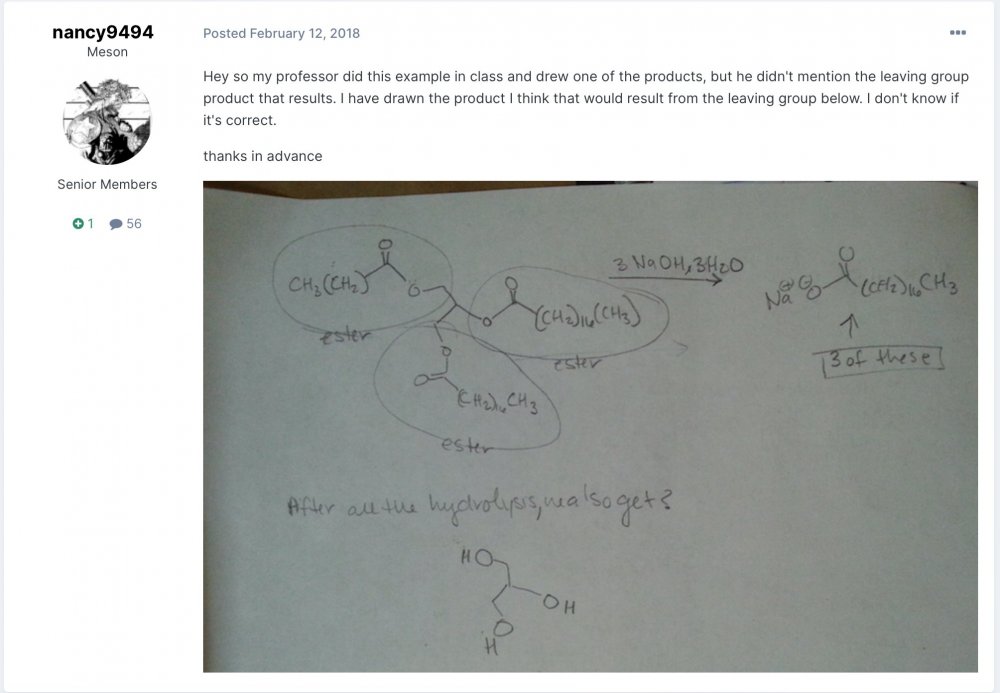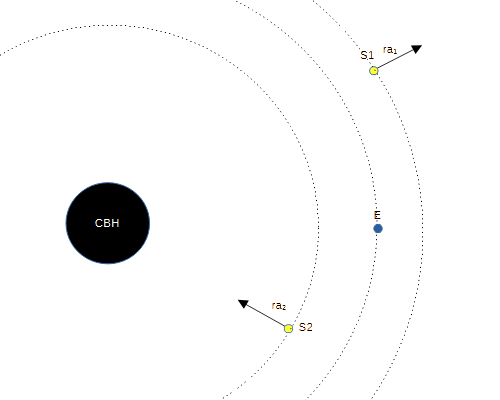All Activity
- Past hour
-

The simplest cause of the accelerating expansion of the universe
Max70 replied to Max70's topic in Speculations
I would like to distinguish the observable universe from the part of the universe that we can observe with our most powerful telescopes. I think that the observable universe is much larger than most people think. If there is an object distant 10100 light years, we could see it if we had a telescope enough powerful. - Today
-
Hello everyone I am beginning on a research adventure about the complex relationship between climate change and biodiversity in coastal ecosystems. As our globe experiences fast environmental transitions, it is critical to understand how these changes impact the delicate balance of life in coastal zones. My research looks into numerous elements of this complex issue. First, I want to look into the direct consequences of rising temperatures and sea levels on the distribution and abundance of coastal species. • How do various animals; ranging from marine mammals to intertidal creatures; react to these environmental changes? • Are any observable trends emerging? Also, I am interested in investigating the indirect effects of climate change on coastal biodiversity. This covers the cascading consequences of ocean acidification on marine life. How are ecosystems reacting to these changes, and what are the implications for overall biodiversity and coastal ecosystem function? Also, I have gone through some posts relevant to this https://www.scienceforums.net/topic/133277-potassium-versus-sodium-in-sea-water/devops this post share valuable insights for understanding and protecting our planet's coastal ecosystems. I appreciate your strategies and methods that experienced people suggest for protecting our planet's coastal ecosystems. Thanks in advance for your efforts;
-
As per my previous thread about a stove my venture into living in a van full time has been a great education in self-sufficiency. As such I have to do commonly taken for granted tasks myself, even those thought of as less desirable as per the title. If I am out in the wilds with no one nearby then it is no problem to bury my waste, making sure to use bio degradable bags to hold it, and let nature take its course. I am often not in nature though. The common advice in the vanlife community is that you can just dump it in any public trash bin since that is where baby nappies (diapers for you americans) go as well as dog poop bags. Although I have done this I do not feel right doing it. It feels anti-social and I feel like I am doing something nefarious and makes me uncomfortable. I am wondering if there is a way to mix certain readily available chemicals or whatnot to make the waste matter more benign such that it wouldn't be offensive so I could store in in my van without it feeling nasty as well as feeling better about throwing in the trash mixed in with my other trash. In the vanlife world there are commercially available toilets which incinerate it. Sounds great but they cost a few grand. I know drying out is a way to preserve food and removes smell. Could that help here? Although the act of 'cooking' one's poop would probably cause a huge stink in the process so not keen on doing that in the enclosed space of my van let alone if passers by may get a whiff, unless chemicals could be added to subdue that. I know criminals use hydrochloric acid to decompose bodies so would probably do the same? Too extreme for the job at hand and risk not to mention accessibility but perhaps the theory can inform using a weaker, relatively safer acid to break it down? We know that waste turns into compost if left in the ground for a year or so but I don't have that time or the land to bury it. So I am wondering if I can do a similar process in a compressed fashion. Well it doesn't have to turn to compost. My goal is just to make it benign smelling enough as to be unrecognizable as its original product giving peace of mind to place in public trash bins. Perhaps my question is naive and if anyone could do this they would be very rich selling a proprietary product? Or maybe there aren't market pressures for it since most humans are happy with their home plumbing systems. I know 'water treatment' plants treat human waste to extract water but have no idea of the process or how specialized it is and whether any of the steps are accessible to the lay person.
-
Thanks very much for your kind words Bufofrog, I got my information from this video. Do you think this chanel has good resources and information? Thanks again, bye!
-
Sorry, this makes no sense. Likewise there are no straight trajectories - every time it will be a moving object aiming to meet a moving object where their gravity-curved trajectories cross. That comment had nothing to do with straight trajectories. It has to do with preventative action against an object whose orbit crosses the orbit of Earth. Of course orbits are curved. Such an object will intersect Earth given enough time. It is officially dangerous. Point is, if you deflect the object while the object is at Earth's orbit, it will return to that location regardless of the new trajectory you send it (unless you impart escape velocity from the sun to it). Orbits are regular visitations to the same locations over and over. So the idea is to deflect the dangerous object when it is well away from Earth order, deflecting into a new orbit that does not intersect Earth's orbit. My comment above stated that doing it at the wrong time accomplishes nothing.
-
This is very helpful. Thank you.
-
MigL (and not only MigL) makes a good point - the objects will be very different in composition as well as size and make very different challenges. Likewise for Earth orbit crossing asteroids with knowable orbits, (lots of lead time and potential to rendezvous on it's way outwards between perihelion before aphelion with much lower delta-v than the other way) and incoming comets or asteroids out of deep space that give much less warning. Different too between one expected to hit on it's inbound approach or hit outbound after perihelion and passage around the sun. Potential for solar electric propulsion. Rendezvous with an object from far out on the inward approach before Earth's orbit needs a lot more delta-v to match course further out in the solar system and solar electric propulsion would not help. If collision is predicted for after passing around the Sun then rendezvous between Earth and Sun and nudging it as it passes closest to the sun may give some potential gravity slingshot gain - if that is possible. But any approach that requires a rendezvous uses a lot of energy moving a spacecraft into matching trajectory, energy that could be delivered DART style more directly. Still not convinced much is gained by gravity tractors over direct thrust, with a broad pad, mat or mesh to spread the load. Maybe. But I am actually more doubtful that any kind of slow thrust will be preferred, however "mounted", as compared to other approaches. If it is not huge and is loose rubble (looser will tend to go with smaller) and there is enough time to use Gravity Tractors then I expect explosive scattering would still do the job quicker and more reliably. Nothing delivers more energy or makes more energetic explosions than thermonuclear detonations - and much more energy can be delivered that way for similar payloads. It isn't just the mass of propellant for GT snigging (Aust/NZ term for dragging logs by chain or cable) but the propellant to get there. DART style kinetic energy transfer seems to have a lot going for it. On a first consideration it seems like a kinetic impact would simply transfer momentum directly opposite to the impact but (if I understand it) a high speed impact sheds a lot of energy explosively and that is outward from the object's surface in meteorite style - so a tangential impact should blow material sideways to the direction of the impact and direction of the object. Whether the changes are better tangentially or by reducing (or speeding up) the object by a front-on or rear-on blast isn't clear to me; it could be effectively equivalent. Mention was made of penetrating munitions; loose rubble piles would be especially susceptible. Any kind of solid metallic ones, maybe not so successful. Sorry, this makes no sense. Likewise there are no straight trajectories - every time it will be a moving object aiming to meet a moving object where their gravity-curved trajectories cross.
-

The simplest cause of the accelerating expansion of the universe
Mordred replied to Max70's topic in Speculations
if you recall this statement I made on page 1. If you perform the same calculation for the radius of Milky way you should get approximately 2.046*10^{-15} N. That is with a little larger than a 1 billion solar mass BH as I rounded up the solar mass. Just for fun I decided to see if Sagittarius A has any measurable influence on our solar system. The answer is the force exerted on a 1 km mass in our solar system is approximately 9.34*10^{-36} N. Easily overpowered by local gravity. -
Democracy was thought to be the system of governance most resistant to corruption and totalitarianism. Then D Trump came along on Jan 6.
-

The simplest cause of the accelerating expansion of the universe
Mordred replied to Max70's topic in Speculations
Ok a back of the envelop calculation using a 1 billion solar mass BH at distance 1 Mpc mass 2 I used 1 kg. \[F=\frac{GM_1M_2}{r^2}\] using this at 1 Mpc the force exerted between mass 1 (roughly 2*10^36 kg) I rounded up for simplicity mass 2 1 kg. radius 30856775812799586000 km. you get roughly \(1.402 *10^{-19}\) newtons of force. Not enough to move a grain of sand.....so much for the idea of ultra-massive BH driving expansion...recall the diameter of the Observable universe above. That is why physics uses math, it tests the feasibility of an idea. -
The reaction is correct! This is an hydrolysis of ester in basic medium. In a basic medium, the hydrolysis of an ester follows a slightly different mechanism compared to hydrolysis in an acidic medium. In basic hydrolysis, the ester reacts with hydroxide ions (OH−OH−) instead of water molecules. The reaction proceeds through a mechanism called saponification, resulting in the formation of a carboxylate ion and an alcohol. This process is commonly referred to as saponification, and it's often utilized in the production of soaps and detergents, where esters (such as triglycerides) react with strong bases (such as sodium hydroxide) to produce carboxylate ions (soap) and glycerol.
-
And I think the key thing is that he's versed in a lay way enough with those subjects enough to just give some choice keywords for people to know where to dig but since it's not his field, he may have read about it once or twice, but not with the same rigour or depth as within his own field of study and active areas of personal passionate interest. I still think he probably should only respond to mass shootings with compassion or not at all but I'm curious as to why @Otto Kretschmer thinks NDGT isn't a scientist just because he hasn't published as much as other scientists or what exactly the bar is supposed to be to maintain status with something that is as much an outlook as it is a profession. Science or the scientific method is just natural philosophy all grown up in some sense. Wittgenstein in some circles was considered to be the greatest philosopher of the 20th century and he barely published anything. 1 book while he was alive, Tractatus Logicus Philosophicus, 1 book after his death called Philosophical Investigationsand 1 book comprised entirely of his notes called On Certainty released in 1969. Decades after his death. In the end because of his public profile he is in a spotlight few scientists are in. That's always going to invite more people scrutinizing him. How would we all come up if under the same spotlight? Absent mistakes, foot in mouth moments, total cock ups etc? I've had brain farts and temper flares here I wouldn't want the public to scrutinize absent context or explanation or maybe just a bit of forgiveness for a bad day that we all have sometimes.
-
Small undiscovered island. Population of 1. No bell required. No one extra to toll it... ...also the ideal authoritarian regime though...
- Yesterday
-
You have the correct products, but you've drawn the loops incorrectly. The oxygen atom on each carboxylate anion comes from the hydroxide ion, not the glycerol molecule. The nucleophilic attack by hydroxide ion is on the carbonyl carbon atom, not the glyceryl carbon atoms. And we know this from isotopic labelling experiments.
-

The simplest cause of the accelerating expansion of the universe
Mordred replied to Max70's topic in Speculations
Thanks I did. https://www.illustris-project.org/ -

The simplest cause of the accelerating expansion of the universe
geordief replied to Max70's topic in Speculations
I think you forgot the link to the video....? -

The simplest cause of the accelerating expansion of the universe
Mordred replied to Max70's topic in Speculations
One of the biggest problems I see with those that try to suggest Galaxy or BHs causing things like expansion etc. Is that they really do not truly understand the sheer volume of our Observable universe. Watch this video at the start it's only showing 42 to 43 Mpc watch as it zooms in. You cannot even discern a galaxy until your less than 1 Mpc. Our Observable universe is 28820 Mpc in diameter. 93 billion light years. Our entire Milky way is 0.01620 Mpc. In radius. There is literally no way no SMBH can possibly affect expansion once you crunch some numbers it's literally impossible. That doesn't even take into consideration that gravity travels at c. You can convert the Mpc into light years to see what I mean by impossible. -
Which is why Larry Flynt noted “Majority rule only works if you're also considering individual rights. Because you can't have five wolves and one sheep voting on what to have for supper” (others have made similar observations over the years) What are the characteristics of this ideal democracy?
-
Yariela castro joined the community
-
I've been watching cable TV since lightning took out my electronics and streaming services...its no wonder our country is so damn stupid. Ancient aliens on the History channel, bigfoot on animal planet, love in paradise on the learning channel, I'm glad we don't have a science channel... no wait!
-

The simplest cause of the accelerating expansion of the universe
MigL replied to Max70's topic in Speculations
Sagittarius A at the heart of our own galaxy has a mass of 4.3 Million Suns, based on the tracks of the stars orbiting around it. The size of its event Horizon is about half the radius of Mercury's orbit, and it is about 27 000 light years from us. Note that the stars of our galaxy do NOT spiral in towards this massive Black Hole, nor do they do so from all sides; galactic rotation is strictly planar. If stars did spiral in towards the central BH, it would be termed an 'active' BH ( not by us; we, and most other life, would be dead ), more commonly known as a Quasi-Stellar Object, or Quasar, and emit more energetic radiation than the rest of the galaxy's stars combined. Fortunately Quasars only exist far away ( actually, long ago, in the early universe ). If this is the 'model' that you scaled-up to explain expansion, clearly, it doesn't work the way you think. Maybe, before thinking you have a 'referenceable' theory, you should acquaint yourself with a little basic astronomy and physics, and take advice from people on how to make your idea ( not model ) testable. -
Makes me wonder if no true Scotsman would have a civil war?
-

The simplest cause of the accelerating expansion of the universe
Max70 replied to Max70's topic in Speculations
The following figure shows the 2D case: The objects in the internal turns of the spiral have greater acceleration than the objects in the external turns. S1 and S2 are two Type Ia supernovae, ra1 and ra2 are their accelerations relative to Earth. I think that is unlikely to have these supernovae at the same distance from the CBH.















